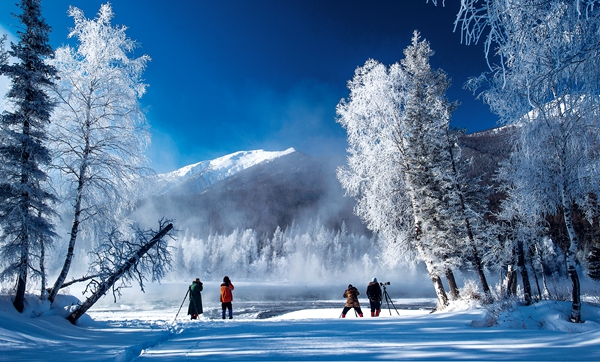
Altay, in Northwest China's Xinjiang Uygur Autonomous Region, is known as the snow capital of China, and the birthplace of skiing. The mountainous region is coated with snow nearly 180 days a year. As it is endowed with rich and unique ice and snow resources, skiing is — and has long been — the most popular winter sport in the region.
Altay is dotted with ski resorts and geological and forest parks. With winter lasting nearly half a year, the region's skiing conditions could be on par with those in the Alps in Europe. Various ski competitions and activities, held every winter, entertain locals and entice winter sports lovers to the region from across the country.
Jiangjunshan Ski Resort, Keketuohai International Ski Resort and Hemu International Ski Resort are the top three ski resorts in Altay. Jiangjunshan, more than 1 kilometer from the downtown area, offers 51 trails, of varying difficulty, for a combined 58 kilometers of skiing. The International Ski Federation has certified two of its trails.
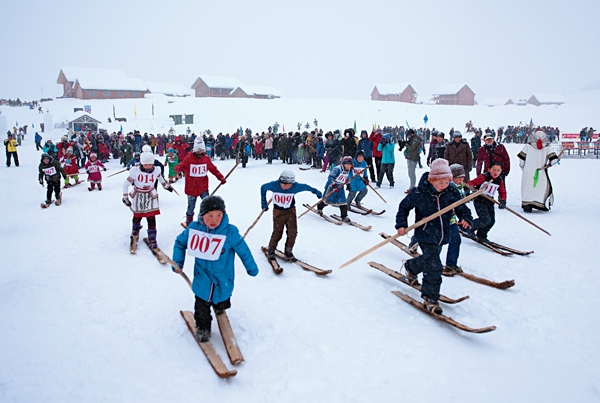
Altay Mountain Wild Snow Park lies about 20 kilometers from the downtown, and it offers skiing and a helicopter experience that hovers over a peak. Tourists can also enjoy wilderness hikes and horse-drawn sleigh rides.
Kanas National Geopark is known for its picturesque landscapes, where tourists are captivated by the primitive beauty of its soaring mountains, intersecting ravines and gullies, luxuriant forests and grasslands, clear water and fresh air. Kanas means beautiful, rich and mysterious in the Mongolian language.
The geopark has China's deepest alpine lake — Kanas Lake. The 45-square-kilometer lake is shaped like a bean pod. Embraced by snow-capped mountains, the Kanas Lake area is covered with dense forests, and it is the only region in China where animals and plants of the South Siberia species can be found. The lake is famous for its changing colors. The color of the water changes as the day progresses, and as the seasons change.
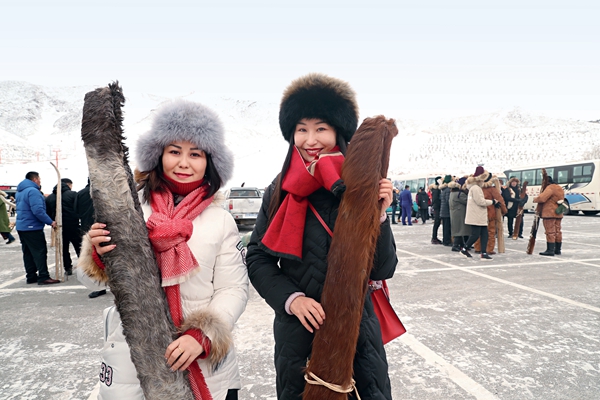
Located near Kanas Lake, Hemu Village boasts a picturesque natural landscape. Its green grassland, boundless forest and misty, snowcapped mountains welcome visitors to a hidden Chinese fairyland.
Hemu Village is the most remote and largest of the three residences of the Tuva ethnic group. The other two are Kanas Village and Baihaba Village, both in Xinjiang.
The locals have kept their simple and ancient lifestyle, and many still make a living through animal husbandry. The residential area is characterized by wooden houses scattered across the village. The doors of the wooden houses open to the east.
Hemu River, whose water is from the snow-covered mountains, is opposite the residential area. There is a bridge over the river, and the villagers call it Hemu Bridge. Tourists can walk across the river to reach the Hemu viewing platform.
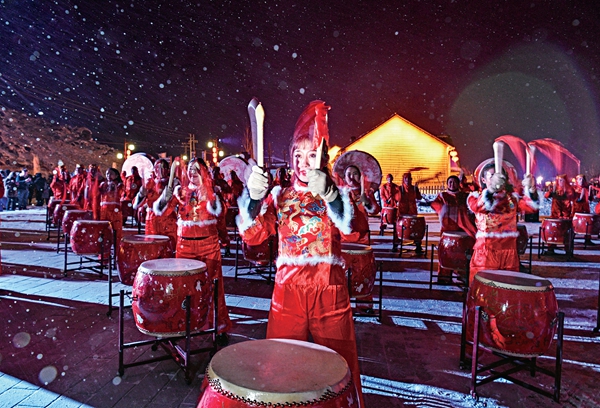
Hemu Village is a paradise for shutterbugs. Sunrises and sunsets offer wonderful opportunities for stunning photos. As night approaches, the sky, adorned with numerous stars, creates a mysterious and mesmerizing view.
The origin of skiing can be traced back more than 10,000 years to Altay. In 2005, a rock painting was discovered by a herdsman in a cave in a township of Altay. It clearly recorded the scene of ancient people chasing prey with skis on their feet and poles in their hands. According to archeologists, the rock painting was created during the paleolithic age, and is at least 12,000 years old.
In 2015, during the international ancient skiing culture exchange conference in Altay, more than 30 skiing-history researchers from 18 countries, including Norway, Sweden and Finland, issued the Altay Declaration, agreeing that Altay is the oldest skiing region in the world.
During ancient times, skiing was an essential part of people's productive lives during the coldest time of the year. It was hard to move around and go hunting without skis.
The bottom of the ancient handmade ski has a layer of horse skin. The hair on the horse skin helps decrease friction when skiers slide down the hill, and it prevents them from slipping backwards when traveling uphill.
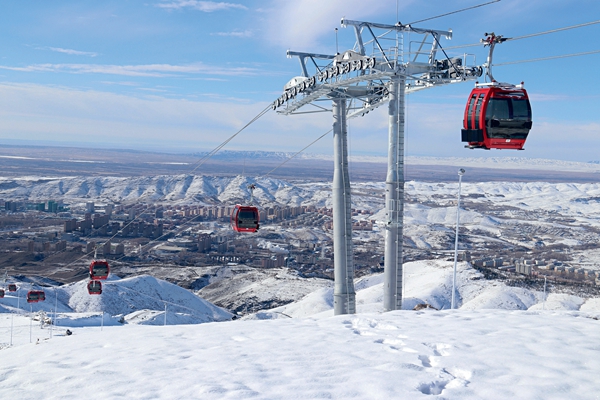
As people's need for survival in winter was satisfied, ice and snow sports, for the sake of recreation and relaxation, started to emerge.
Altay's traditional handmade skis covered with fur are still made and used by people. Annual skiing competitions, using the skis to race across snow, are even held.
This special kind of ski is on display in the Beijing Winter Olympics Museum and the Shougang Park Exhibition Hall of the Organizing Committee of the Beijing Winter Olympics.
During the opening ceremony of the Beijing 2022 Winter Olympics, on February 4, 2022, women's cross-country skier Dinigeer Yilamujiang, a native of Altay, was one of two young athletes who lit the Olympic Cauldron. Dinigeer, born in 2001, is an excellent skier, and she has won several championships hosted by the International Ski Federation.
Photos Supplied by Xu Liansheng and VCG
(Women of China English Monthly January 2023 issue)